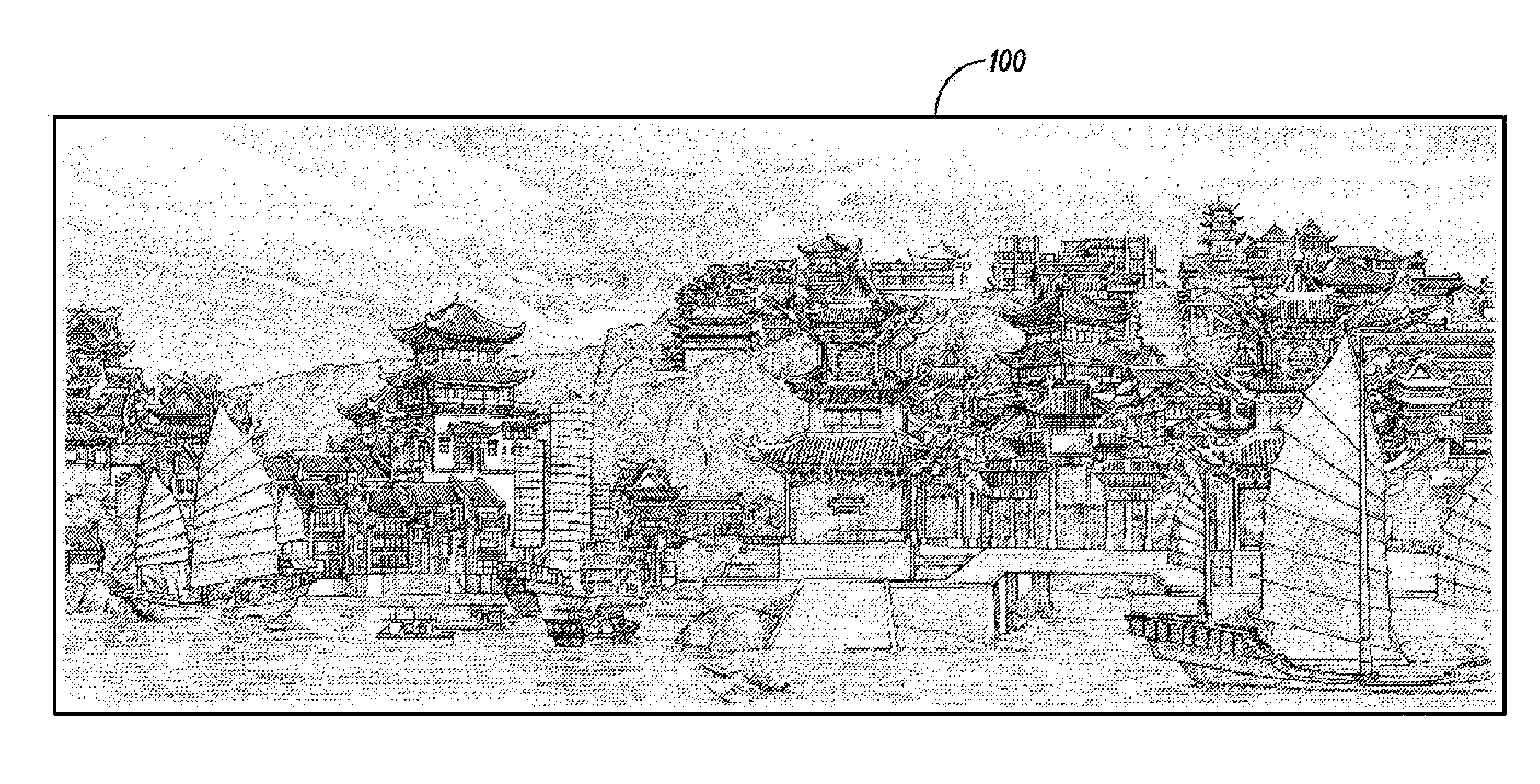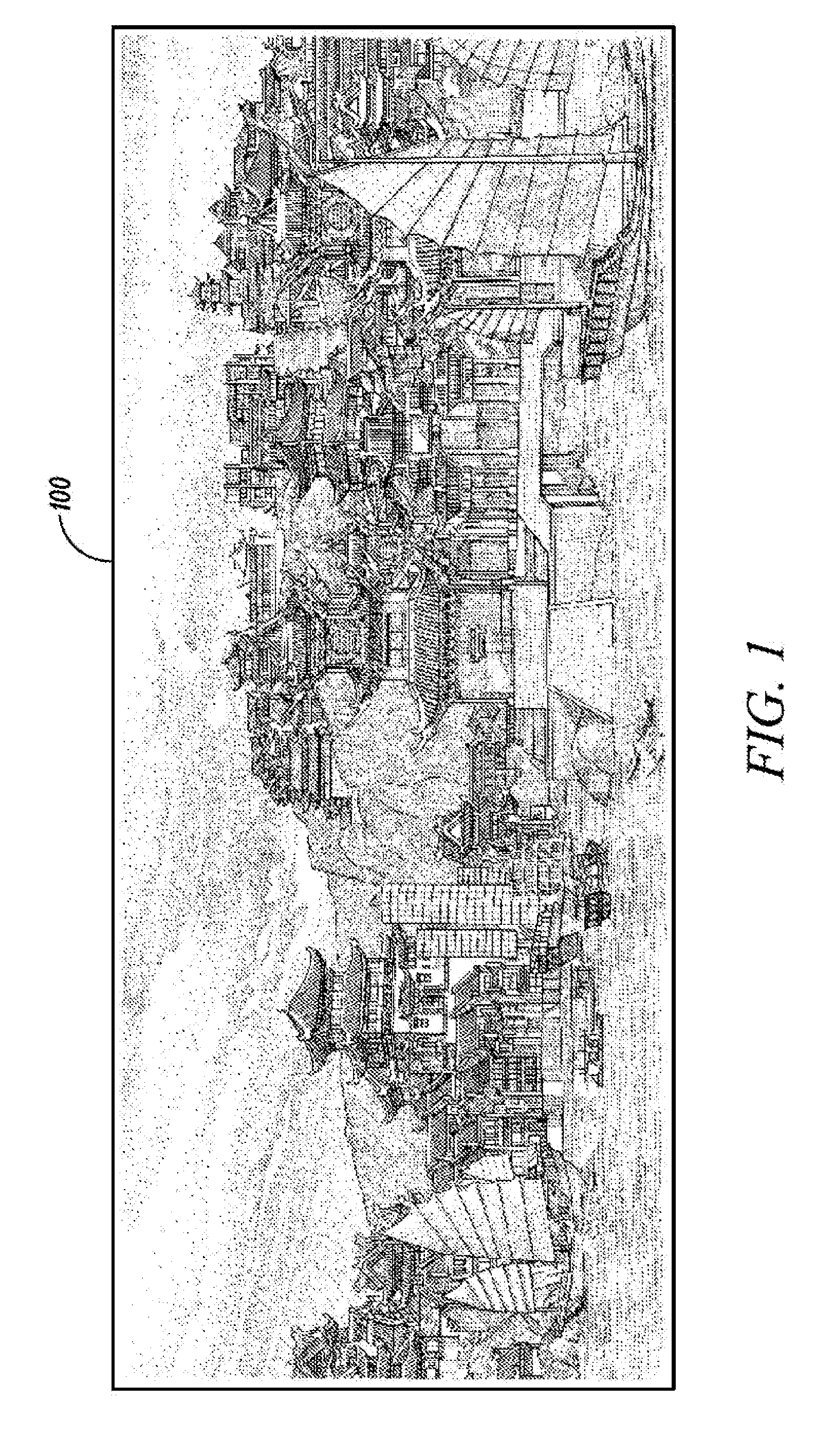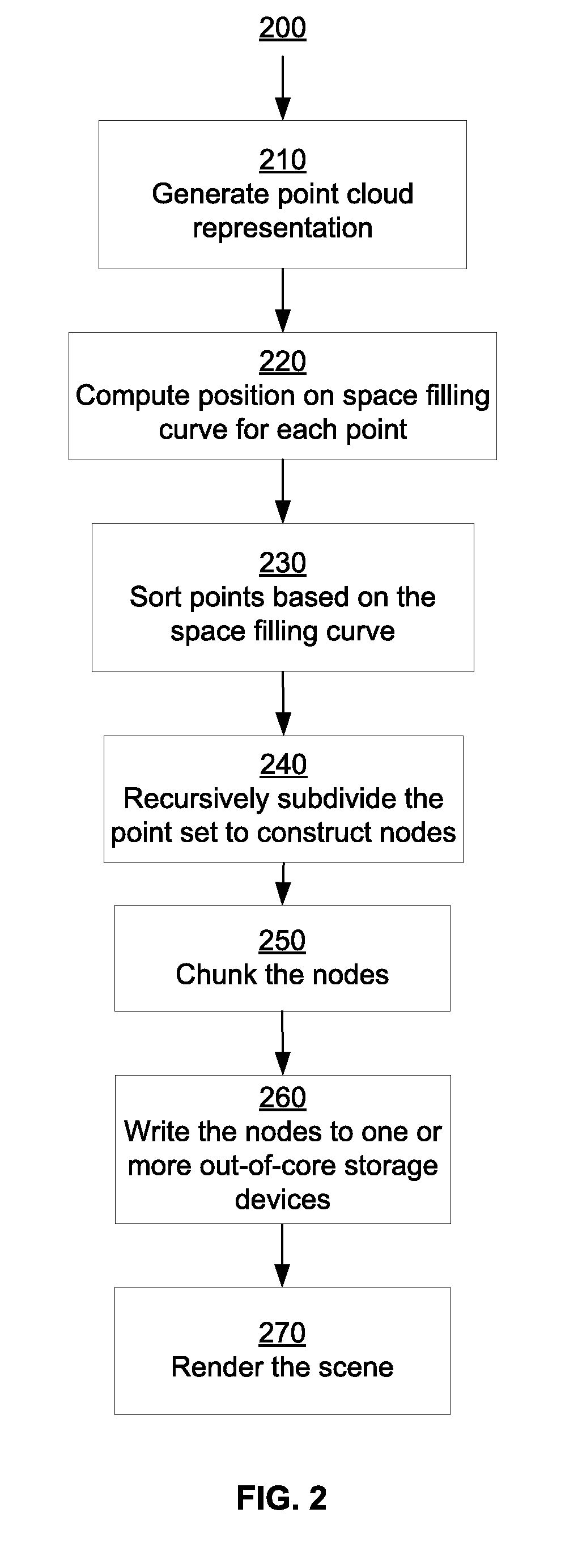Coherent out-of-core point-based global illumination
a global illumination and out-of-core technology, applied in the field of computer graphics, can solve the problems of long shading time, inability to translate integrals, and limited number of points, and achieve the effect of lessening the main memory requirements for shading a scen
- Summary
- Abstract
- Description
- Claims
- Application Information
AI Technical Summary
Benefits of technology
Problems solved by technology
Method used
Image
Examples
Embodiment Construction
[0023]The following description sets forth numerous specific configurations, parameters, and the like. It should be recognized, however, that such description is not intended as a limitation on the scope of the present invention, but is instead provided as a description of exemplary embodiments.
[0024]FIG. 1 illustrates an exemplary scene 100 rendered using PBGI. To photo-realistically render scene 100, the point cloud may require 927 million points, resulting in an octree with 203 million nodes. These points may occupy 27.6 GB of space, while the octree may require an additional 22.7 GB. To render scenes using the PBGI technique described by Christensen 2008, the entire scene may need to be accessed and located in main (in-core) memory. Today, it is difficult to store over 50 GB of data in main memory. Therefore, scene 100 may instead be generated using out-of-core PBGI. In general, out-of-core processes are designed to process data that are too large to fit into a device's main mem...
PUM
 Login to View More
Login to View More Abstract
Description
Claims
Application Information
 Login to View More
Login to View More - R&D
- Intellectual Property
- Life Sciences
- Materials
- Tech Scout
- Unparalleled Data Quality
- Higher Quality Content
- 60% Fewer Hallucinations
Browse by: Latest US Patents, China's latest patents, Technical Efficacy Thesaurus, Application Domain, Technology Topic, Popular Technical Reports.
© 2025 PatSnap. All rights reserved.Legal|Privacy policy|Modern Slavery Act Transparency Statement|Sitemap|About US| Contact US: help@patsnap.com



